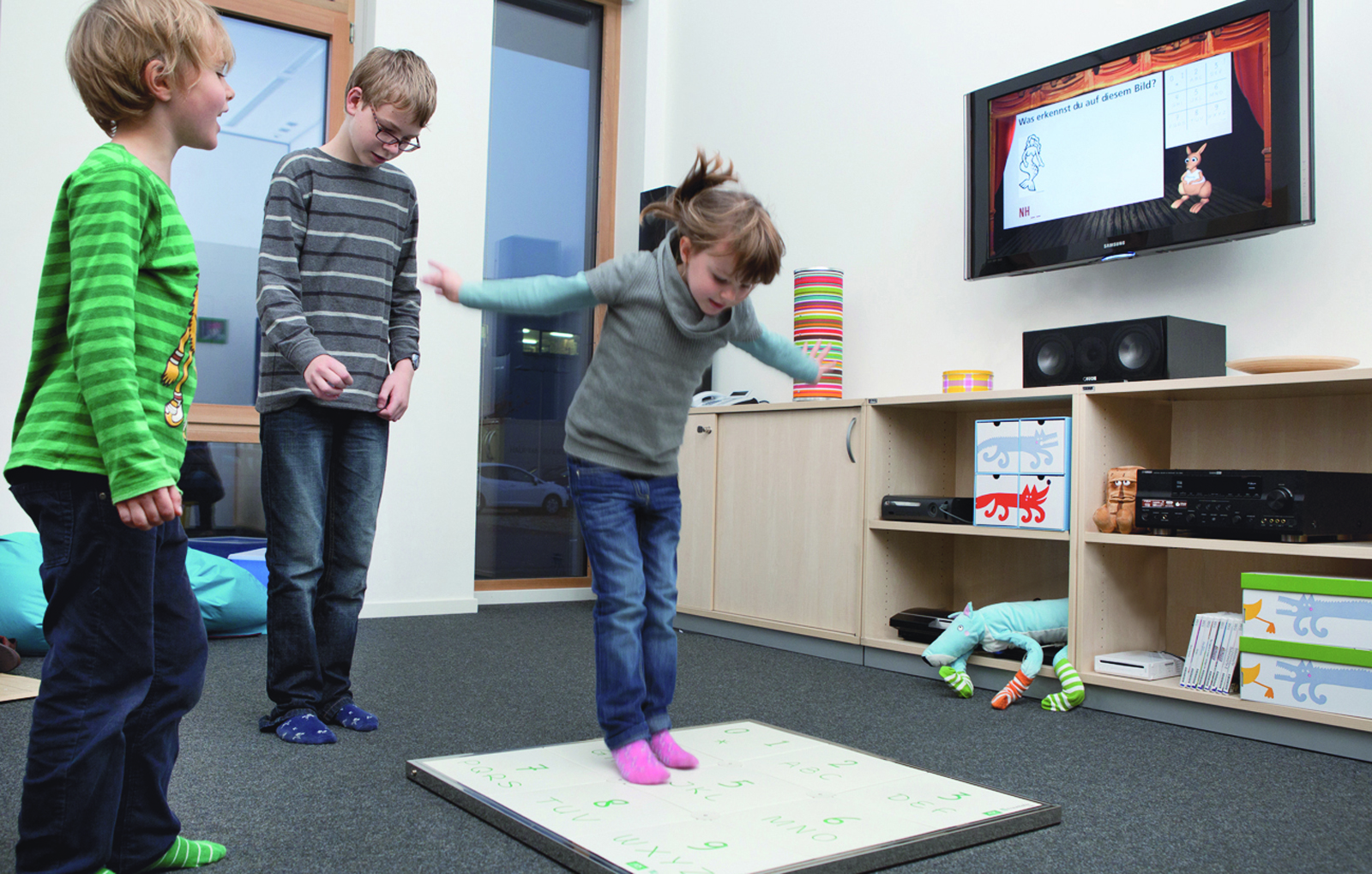Medica 2012
Keep moving and have fun
People are moving less and less these days. Fraunhofer researchers have developed an interactive learning system that is supposed to motivate the user to move more but in a playful way: They have combined a sensor mat with an activity monitor. Children and adults can use the system to stay fit and learn at the same time. The highlight: The system records the intensity of the physical activity and immediately displays it. The system will be presented at the Medica 2012 trade fair from November 14-17 in Hall 10, Booth F05.
Physical activity is extremely important– this applies equally to both young and old. People who exercise regularly are healthier, are rarely overweight and increase their power of concentration. Staying physically and mentally fit – with the interactive learning system HOPSCOTCH every age group can do this easily and playfully. HOPSCOTCH consists of a sensor mat that is subdivided into nine fields, and each field has several letters and a number in it. The mat is connected to a monitor via a cable, and tasks from various fields of knowledge are displayed on the monitor. In order to complete the task the user presses on the fields of the sensor mat in the correct order and enters words or numbers. Dr. Martina Lucht, a media scientist at the Fraunhofer Institute for Digital Media Technology IDMT in Ilmenau, came up with the idea for the mat when she saw a hopscotch grid drawn on the street.
Sensor records the intensity of physical activity
Lucht and her team worked closely with researchers at the Fraunhofer Institute for Integrated Circuits IIS in Erlangen to further develop HOPSCOTCH and added ActiSENS, a motion sensor that measures physical activity that was developed by Fraunhofer IIS. ActiSENS registers all of a person‘s movements, records their intensity and then rates them. The module determines whether the user simply tapped the fields with their foot or actually jumped and hopped on them. The feedback is displayed on the monitor in real time using five bars. „It doesn‘t just matter whether or not the task was completed, but also how. ActiSENS tells the user whether or not they have moved enough,“ explains Martin Rulsch, a computer scientist at Fraunhofer IIS. „The goal is to motivate the user to move more and have fun.“
The small sensor is housed in a box that is hooked to the user‘s belt. The data is read in real time and transmitted via Bluetooth to a terminal device, such as a television. „But a cell phone can also be used as an output device,“ says Rulsch. The data can also be saved to a flash memory and transmitted to a PC later to evaluate it.
The concept‘s possible areas of applications are varied: in schools it can be combined with language and gym classes – this doesn‘t just benefit overweight or hyperactive children. Studies have shown that there is a growing number of students who can no longer perform simple tasks such as walking backwards or standing on one leg due to a lack of physical activity.
But older adults in rehab centers and retirement or nursing homes can also profit from the innovative movement concept that motivates people to move more in a lasting way. It can be used in parallel with physical therapy, for example to train muscles after operations. Since ActiSENS accurately calculates net movements and the level can be modified to the individual‘s endurance, which prevents it from over- or under-challenging the individual. The researchers at Fraunhofer IIS and Fraunhofer IDMT will be presenting their system at the Medica 2012 trade fair in Düsseldorf from November 14-17 at the Fraunhofer joint booth in Hall 10, Booth F05.
